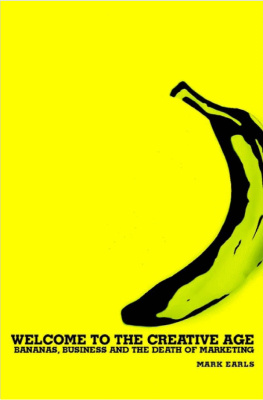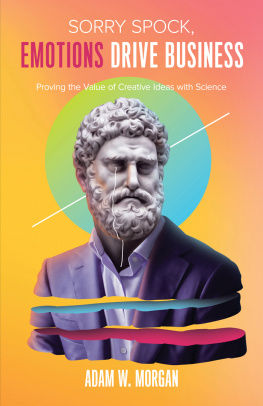




Contents
Foreword
In Improvisational Theatre, there is a game called `Colour, Advance'. It goes like this: I begin to tell you a story - let's say a children's fairy story. At regular points in the story you, the listener, can give me one of two different commands - `Colour' or `Advance'. If you say `Colour', then I cannot (for the moment) go on developing the narrative in terms of advancing the plot; all I do is give you some further description of the place where we are, the flavour and texture of the scene and characters at this point in the story - the simple dark wood of my grandmother's bed, for instance, or the dull yellow glow of the wolf's teeth, or the reassuring weight of the Glock 9mm in the deceptively capacious little picnic basket under my arm. If you command me to `Advance', on the other hand, then all I am allowed to do is advance the plot - give you, the listener what happens next, each new development in the story, action by action, until you stop me and ask me to `Colour' again.
The value of this game lies in helping teach how narrative progresses, or rather how it needs to progress in order to function powerfully as narrative: to progress, to be specific, it teaches us that narrative needs to both Colour and Advance in more or less equal measure. If it is all Colour and no Advance, then we never get anywhere and lose attention. If it is all Advance and no Colour, then we never have any scene-setting or character development, so we have little motive for finding out what happens next even when it is told us. We need both Colour and Advance to genuinely progress, and to hold our attention.
So now let us imagine we are describing the narrative of Marketing and Marketing Thinking, as it has been told to us over the last twenty years, in terms of `Colour, Advance'. I would suggest that whatever the claims various eminent marketing men and women have explicitly or implicitly made about the relevance of the views and perspectives they have advanced, the narrative of Marketing has not perceptually really developed very much at all over that period - that in fact if we were really honest, in the eyes of
Now here's the thing. Mark isn't trying to advance the narrative of Marketing, either. What he is proposing to do in this book is more provocative and ambitious altogether - namely, to show that the narrative of Marketing is now essentially out of date, an interesting museum piece at best, and that it is instead time to start a new kind of narrative altogether. That the whole narrative of the Age of Marketing is over, in fact, and it is time for us to begin that of the Age of Creativity.
I should tell you that the exposition of the principles of the Age of Creativity will be for some at times an uncomfortable ride: Mark tears up a lot of what we are secure and familiar with (fundamental notions such as `brand' and `consumer-orientation', for instance), and, while giving us some of the new building blocks, he asks as many questions about the way forward without these familiar handrails, as he offers answers. This is not negligence - his point is that he can only give us the principles of the new starting point; for the rest, we have to work it out for ourselves - each narrative has to be a personal one in this new world. Each of our starting points, what Mark calls our `purpose-ideas' will be different; each of our organizations will be in different states of readiness or predisposition - and for the way ahead, he gives us a compass, but no map. And that makes for a journey that will require as much from our character as it will from our thinking.
You may not want to agree with all of what follows straightaway - in fact, I rather suspect Mark would be secretly disappointed if you did. (You know how it is when you are selling a house, when the very first buyer agrees instantly to the asking price - what is your immediate thought? That in that case you haven't pushed the initial price hard enough ...). But it is not how much you agree or disagree with that it seems to me Mark is really interested in. He is interested more generally in kick-starting an entirely fresh way of thinking about companies and consumers in each of us. And if he succeeds in simply beginning that process, in abandoning Colour and starting to Advance in the right direction, he will have been successful.
Robert Frost once said, `Thinking is not the same as agreeing or disagreeing. That's voting'. This is a book for people who want to define their own future by thinking for themselves.
Adam Morgan
Former Strategic Planning Director for TBWA Europe
Now Director of EatBigFish
To my Father
Acknowledgements
 rithout the amazing experiment of St Luke's, this book would not have been written. The thinking that became this book emerged out of a conversation with Jo and Anneke about why hiring a marketing director wasn't the answer to Anita Roddick's problems. They first made me write down my doubts and Anita herself validated them. Jessica had the first of many debates on a Bath-bound train with me about the early thinking. Kate, Jonathan, Michele, Seyoan, Colin, Tim, Howard, Al, John, JJ, Magnus, Andy P, Jo, Tim, Robbie, Ruth, Nick and Graham all contributed in ways they will only partly understand.
rithout the amazing experiment of St Luke's, this book would not have been written. The thinking that became this book emerged out of a conversation with Jo and Anneke about why hiring a marketing director wasn't the answer to Anita Roddick's problems. They first made me write down my doubts and Anita herself validated them. Jessica had the first of many debates on a Bath-bound train with me about the early thinking. Kate, Jonathan, Michele, Seyoan, Colin, Tim, Howard, Al, John, JJ, Magnus, Andy P, Jo, Tim, Robbie, Ruth, Nick and Graham all contributed in ways they will only partly understand.
Many people encouraged me to write this book. My colleagues and coowners at St Luke's gave me a sabbatical which made it possible to do so and let me use their work as examples of my ideas. David Abraham critiqued early drafts and challenged me to find the answers to the questions I was posing. My friends Merry Baskin and Janet Grimes sat through the early speeches more times than any one should have to. Marilyn Baxter, Ginny Valentine and Wendy Gordon all reassured me that I did have something to say. All of the people I interviewed were unfailingly helpful and encouraging. In particular, Peter Wells of Nilewide has been an invaluable correspondent and stimulus to my thinking and writing, always turning up a new angle to look at a problem from and reminding me that surfing is more important than anything.





















 rithout the amazing experiment of St Luke's, this book would not have been written. The thinking that became this book emerged out of a conversation with Jo and Anneke about why hiring a marketing director wasn't the answer to Anita Roddick's problems. They first made me write down my doubts and Anita herself validated them. Jessica had the first of many debates on a Bath-bound train with me about the early thinking. Kate, Jonathan, Michele, Seyoan, Colin, Tim, Howard, Al, John, JJ, Magnus, Andy P, Jo, Tim, Robbie, Ruth, Nick and Graham all contributed in ways they will only partly understand.
rithout the amazing experiment of St Luke's, this book would not have been written. The thinking that became this book emerged out of a conversation with Jo and Anneke about why hiring a marketing director wasn't the answer to Anita Roddick's problems. They first made me write down my doubts and Anita herself validated them. Jessica had the first of many debates on a Bath-bound train with me about the early thinking. Kate, Jonathan, Michele, Seyoan, Colin, Tim, Howard, Al, John, JJ, Magnus, Andy P, Jo, Tim, Robbie, Ruth, Nick and Graham all contributed in ways they will only partly understand.